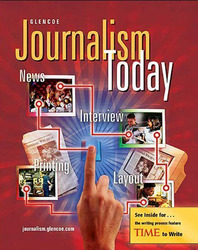Journalism TodayChapter 15:
Writing for Radio and TelevisionActivity Lesson PlansIntroduction
In Chapter 15 students have read about broadcast journalism. In this activity they will read about the advent of satellite radio and the issues surrounding this new medium. Then students will answer reading comprehension questions, in addition to exploring their own views and ideas, about the "Satellite Radio Revolution." Lesson Description
In this activity students will use the Internet to read the feature story "The Satellite Radio Revolution," a Jim Lehrer's NewsHour Extra designed for students. Instructional Objectives
- Students will become familiar with satellite radio.
- Students will be able to compare and contrast traditional AM-FM radio with satellite radio.
- Students will become aware of the 1996 Federal Communications Act and its impact on radio broadcasting.
- Students will be able to navigate a Web site effectively.
Student Web Activity Answers
- Answer: Satellite radio sends transmissions from satellites that orbit the earth. The signals sent by satellite radio are strong enough to allow listeners to follow the same radio station from location to location. Listeners must subscribe to satellite radio and pay a monthly fee to listen to commercial-free radio programming. AM and FM radio rely on local radio towers to broadcast signals and use advertising or donations to pay for the cost of programming. Listeners might lose stations from locale to locale, but they do not have to pay to listen.
- Answer: "Before 1996, the government's Federal Communications Commission (FCC) had numerous rules to try to promote diversity by limiting the number of radio stations one company could own. The Telecommunications Act sought to spur innovation by getting rid of unnecessary regulations….the lack of regulations enabled a few big corporations to buy many small radio stations."
- Answer: The FMC is an advocacy group called the Future of Music Coalition. This group asserts that deregulation has created homogenized programming, excluding independent or edgy artists from the majority of radio programming.
- Answer: Sirius Satellite Radio, XM Satellite Radio, the Federal Communications Commission, Clear Channel Communications, Infinity Broadcasting, Cumulus Media, Future of Music Coalition.
- Answer: Student answers will vary.
GO TO STUDENT ACTIVITY  | 




